Right at the beginning
 |
| Star-forming regions in the Eagle Nebula |
Around 9 billion years ago (Gya), there existed a contracting molecular cloud of gas and dust (AKA a Nebula). This cloud was a stellar nursery where many stars were being born. Two of these stars paired up (called a binary star system).
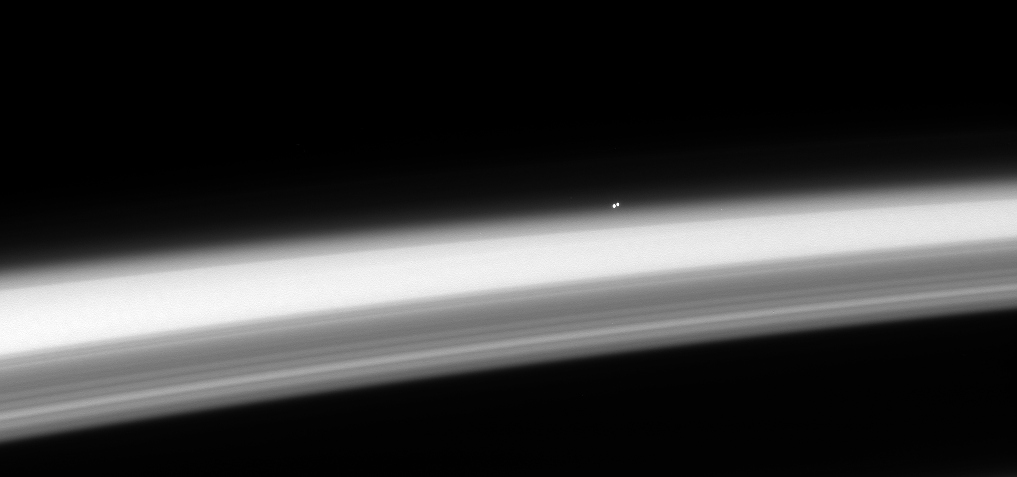 |
| Cool picture of the 2nd closest stars to the Earth - Alpha Centauri A and B over the rings of Saturn. |
This was our pre-Solar System. The first star was a Blue Giant star named "King.
 |
| A Blue Giant star |
and a (smaller) "Main sequence" Star about 8 times larger than the Sun - named "Queen"
 |
| A Yellow Class G star |
Giant stars tend to have short lifespans. A Blue Giant star might only "burn" for 100,000 years. It was King's time, so he blows up in a spectacular supernova.
 |
| Supernova Type II? |
Note: That should be a supernova at the center, and the planet on the upper left should be the G-class star Queen (being almost snuffed out). Find me a better picture!). It does show the dust cloud nicely.
The supernova left a neutron star at its center - called Spider (lines show Very strong magnetic fields).
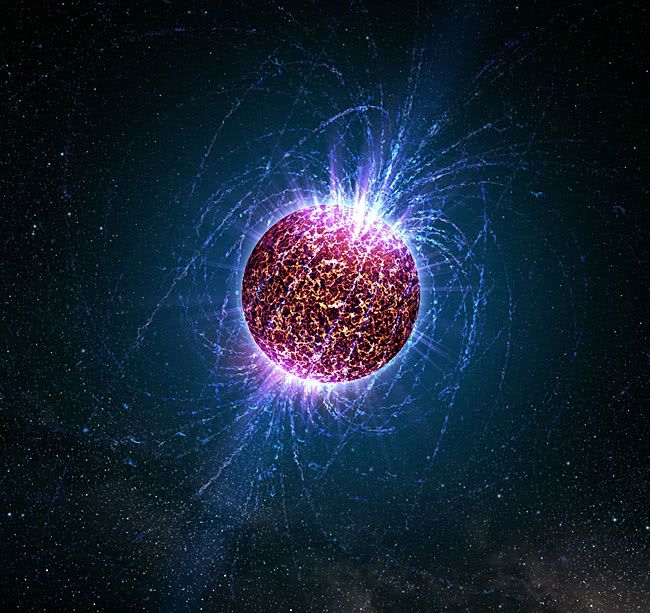 |
| Neutron star |
The Neutron star Spider and Queen stayed a binary pair with Spider orbiting Queen.
This arrangement was stable for 2-3 billion years, but eventually Queen "used up" Hydrogen in its core. This caused the core to contract and the outer layers to swell immensely. Fusion starts in these outer layers and a Red Giant star is born.
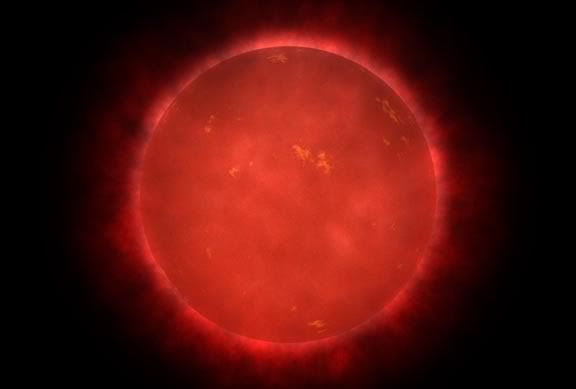 |
| A Red Giant star |
As Queen expands into a Red Giant, the Neutron star Spider (that is still orbiting) starts to "run into" the outer layers. As Spider started "sucking up" this gas, it turned into a pulsar. A pulsar basically "sucks" gas from a nearby star (Queen) and turns that into energy (X-rays, gamma-rays,etc.).
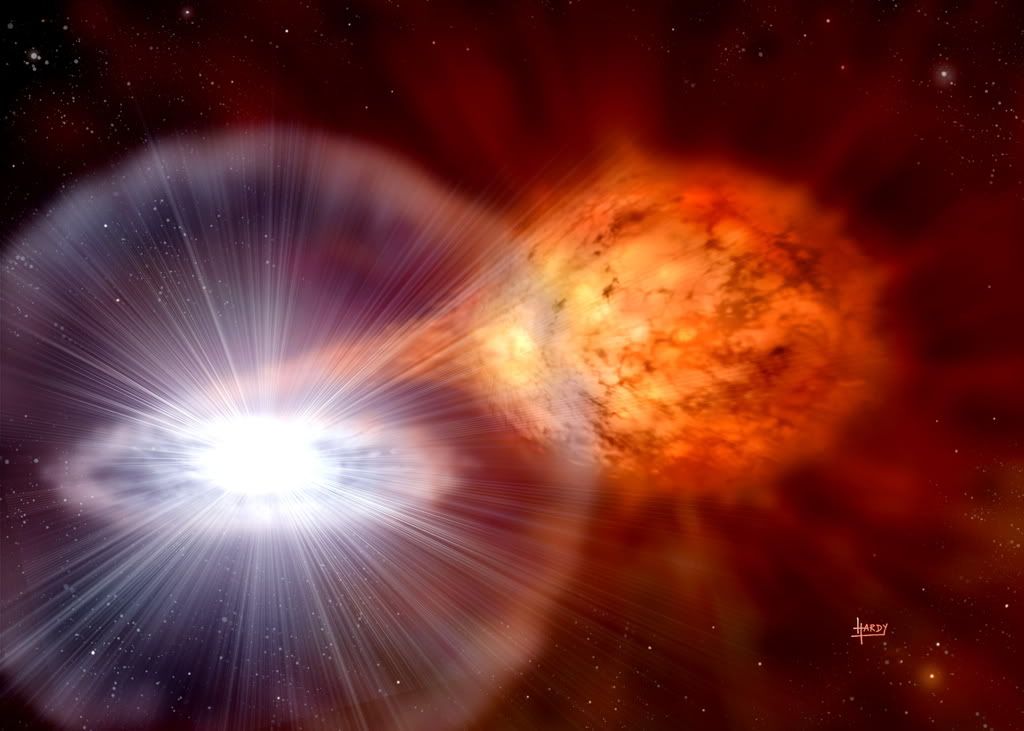 |
| Pulsar with Red Giant companion star |
Eventually, Queen also reaches the end of her life. She is not large enough to supernova, so what happens to her is she sheds her outer layers (forming a planetary nebula), and her core becomes a white dwarf star called Rabbit.
 |
| White Dwarf star in the center of a Planetary Nebula |
Usually, this planetary nebula expands "forever" - it can grow beyond 1 light year in size.
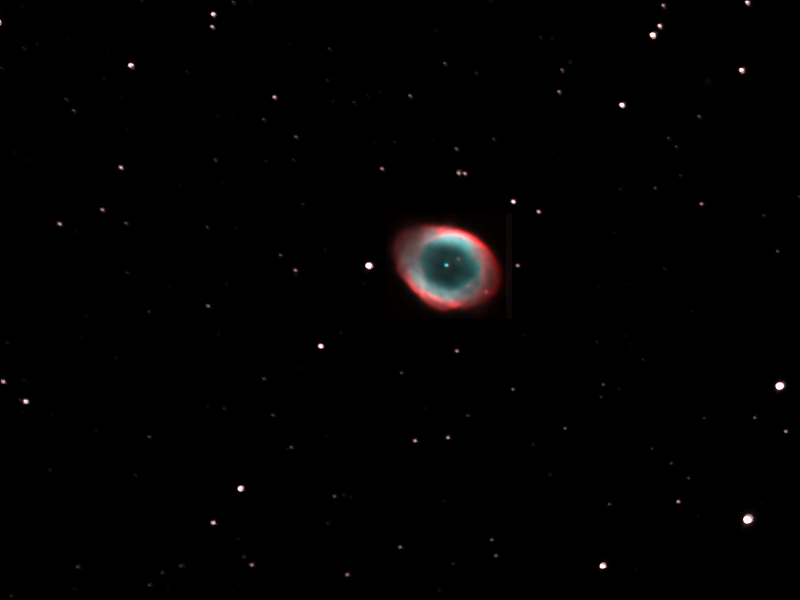 |
| Expanding Planetary Nebula |
But in this case, there was a neutron star (Spider) with the gravity of 2+ Suns - and the white dwarf star (Rabbit) with the gravity of 1+ Sun. The planetary nebula could not escape from these 2 stars.
 |
| Binary stars |











No comments:
Post a Comment